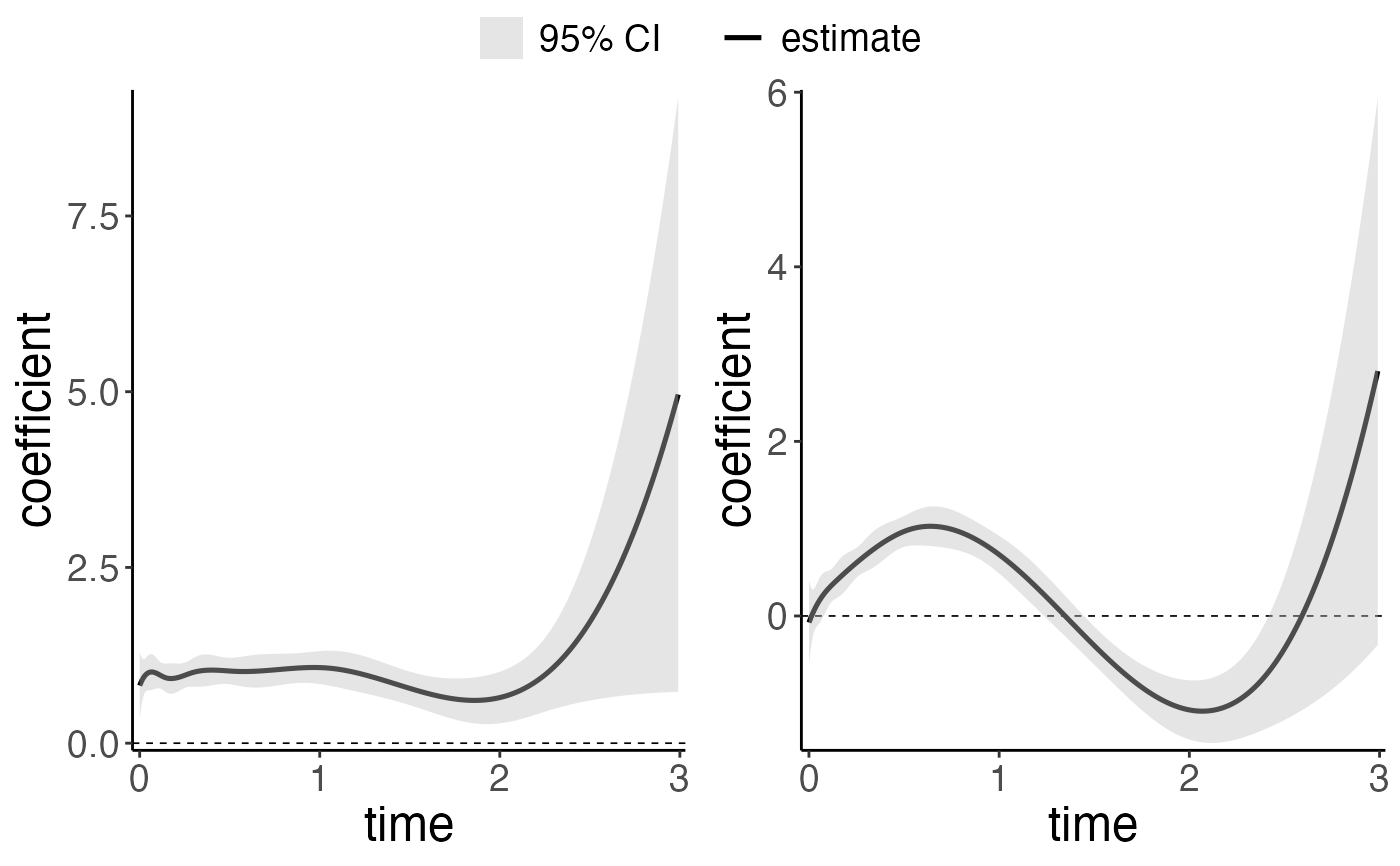This function creates a plot of the time-varying coefficients from a fitted coxtv model.
# S3 method for coxtv
plot(
x,
parm,
CI = TRUE,
level = 0.95,
exponentiate = FALSE,
xlab,
ylab,
xlim,
ylim,
allinone = FALSE,
title,
linetype,
color,
fill,
time,
...
)Arguments
- x
model obtained from
coxtv.- parm
covariate names fitted in the model to be plotted. If
NULL, all covariates are plotted.- CI
if
TRUE, confidence intervals are displayed. The default value isTRUE.- level
the level of confidence intervals. The default value is
0.95.- exponentiate
if
TRUE, exponential scale of the fitted coefficients (hazard ratio) for each covariate is plotted. IfFALSE, the fitted time-varying coefficients (log hazard ratio) are plotted.- xlab
the title for the x axis.
- ylab
the title for the y axis.
- xlim
the limits for the x axis.
- ylim
the limits for the y axis.
- allinone
if
TRUE, the time-varying trajectories for different covariates are combined into a single plot. The default value isFALSE.- title
the title for the plot.
- linetype
the line type for the plot.
- color
the aesthetics parameter for the plot.
- fill
the aesthetics parameter for the plot.
- time
the time points for which the time-varying coefficients to be plotted. The default value is the unique observed event times in the dataset fitting the time-varying effects model.
- ...
other graphical parameters to plot
Examples
data(ExampleData)
z <- ExampleData$z
time <- ExampleData$time
event <- ExampleData$event
fit <- coxtv(event = event, z = z, time = time)
#> Iter 1: Obj fun = -3.2982771; Stopping crit = 1.0000000e+00;
#> Iter 2: Obj fun = -3.2916285; Stopping crit = 2.1424865e-02;
#> Iter 3: Obj fun = -3.2916034; Stopping crit = 8.0884492e-05;
#> Iter 4: Obj fun = -3.2916034; Stopping crit = 1.8232153e-09;
#> Algorithm converged after 4 iterations!
plot(fit)
